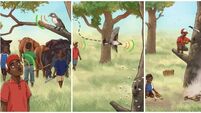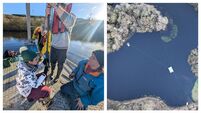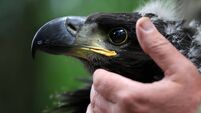How Howling Ridge got its name... the vertical rocks and magnificent scenery of Carrauntoohil
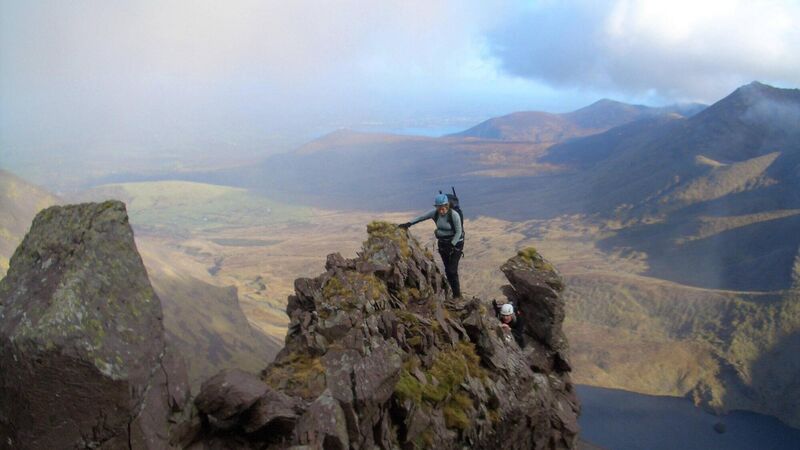
Climbers on Howling Ridge. Picture: John G O'Dwyer
On a February day in 1987, a Kerry man in his 20s from the Gap of Dunloe and a 16-year-old youth roped together beneath Ireland's highest mountain at a place known as the Heavenly Gates. They attached ice-climbing crampons to their boots and then began moving cautiously up a steep face on the snow-covered east face of Carrauntoohil.
Leading the climb was Con Moriarty. Known locally as the 'Mountain Man', he was already an experienced climber, having four years previously made the first ascent of the hardest route on Carrauntoohil. This was Primroses Ridge, which is rated very severe in climbing terms and dramatically separates the north and east faces of the mountain. He had just returned from a winter climbing expedition to Ben Nevis, where he had been enthralled by ascending the world-famous Tower Ridge in snow and ice. Scotland had, of course, a historically strong tradition of winter climbing, but the sport was virtually unknown in Kerry. Moriarty was now anxious to prove that challenging ice climbs could also be found in Ireland, and the severe winter of 1987 provided the perfect opportunity.
When, in mid-February, good snow conditions presented themselves, Moriarty wasted little time. Youthful climbing enthusiast John Cronin, whose family home was in the shadow of the McGillycuddy’s Reeks, was literally roped up at short notice for a winter climb on Carrauntoohil.
As the pair ascended from the Heavenly Gates, they were surprised to find themselves on a well-defined and exposed ridge no one had discovered previously. It had remained unclimbed because — unlike the famous Scottish mountain ridges — it is not easily identifiable from below. Even today, the line of this "shy ridge" is discernible only to those who know exactly where to look.
As the features of the route unfolded, it became apparent that the climbing was generally superior to Tower Ridge. Clearly, it was harder and also, unlike the Scottish ridge, it never relented but presented a continual series of intriguing challenges. Many times, the ice-crusted way ahead seemed barred by vertical rock, but somehow hand-holds and foot-holds always presented themselves, and upward progress was maintained.
Moriarty remembers "the characteristically rapid height gain of the area, the immediate grandeur, and the magnificent scenery of our parish and beyond". Then the climbers were distracted by piteous howling from below. Moriarty's dog Grimsel had followed to the foot of the ridge but then found the going beyond even the climbing abilities of a husky.
As the lonesome howling continued, the route veered right, and suddenly the pair found themselves in familiar territory. They had joined the top of Primroses Ridge and the way ahead to the summit was now unobstructed. Incredibly, they had stumbled upon a previously unknown geographical feature on Ireland's highest mountain. Offering 200 metres of vertical ascent, it was promptly named Howling Ridge in honour of Grimsel — the husky that didn't bark but howled instead.
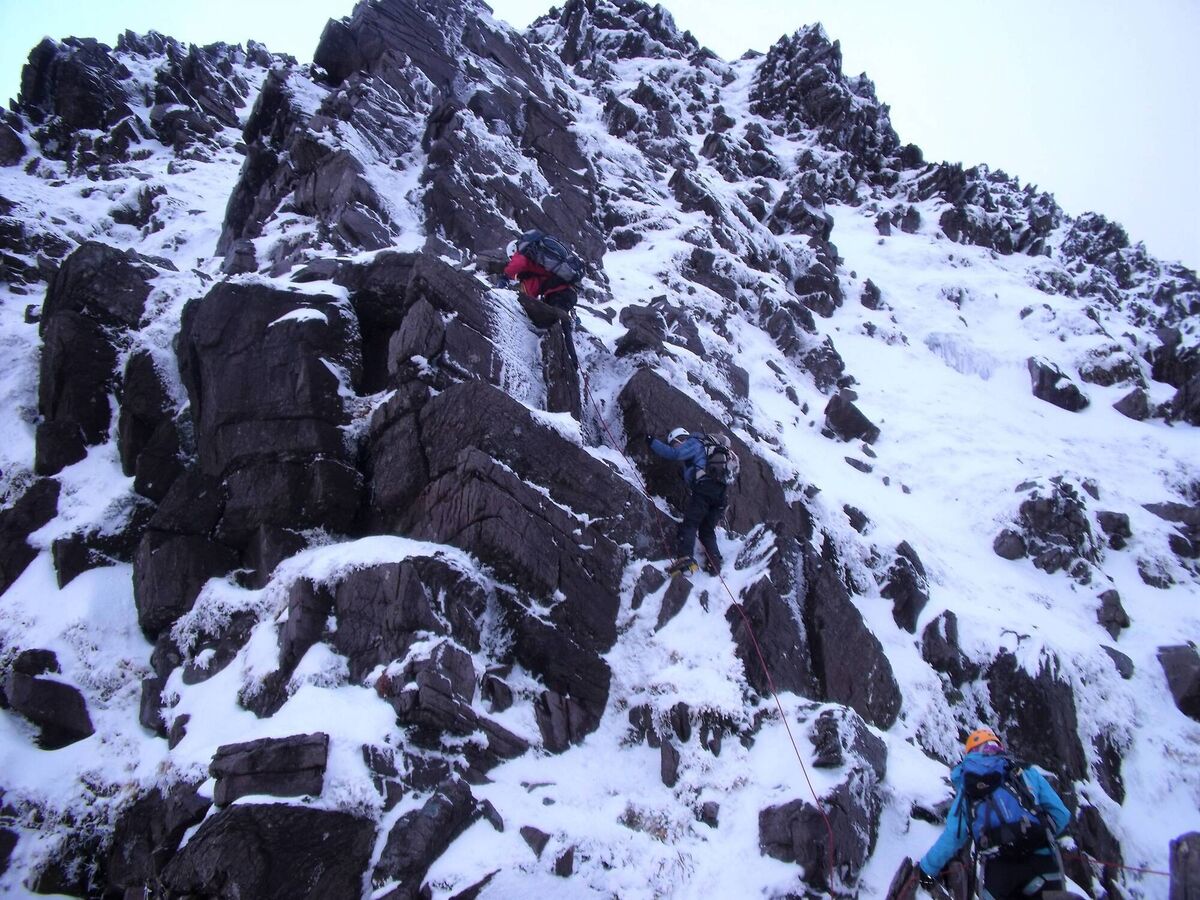
The Ridge is today regarded as one of Ireland’s finest mountaineering routes and is ascended hundreds of times annually as a summer route. It isn't the most difficult ascent on Carrauntoohil but it is by far the most enjoyable.
"Have ya done Howling yet?" is a common 'getting to know you' inquiry in Irish mountaineering circles. Indeed, Howling has become a rite-of-passage ascent for many hillwalkers eager to make the knee-knocking transition from hiking and rambling to dangling and scrambling on sheer rock faces.
On sunny days, when the mountain is friendly and the sandstone offers excellent friction, climbing Howling provides an exhilarating feeling that comes with rising rapidly heavenward on a superb mountain face. In a venomous mood, however, it lays many traps to snare the unwary and the consequences of simple mistakes have varied from serious to tragic.
Today, John Cronin runs a climbers' café beneath Carrauntoohil while continuing as a Kerry Mountain Rescue volunteer.
Con Moriarty leads tour groups to some of the most beguiling places on Ireland’s west coast but still remembers the mid-1980s as a golden age for Kerry mountaineering.
"Not only did we discover Howling Ridge, but the severe winters of this period allowed a group of enthusiasts to put up a plethora of wonderful new ice climbs on the north and east faces of the mountain that are now recognised as classics and will stand the test of time."
- Stories from the Irish Uplands by John G O’Dwyer is available from currachbooks.com





